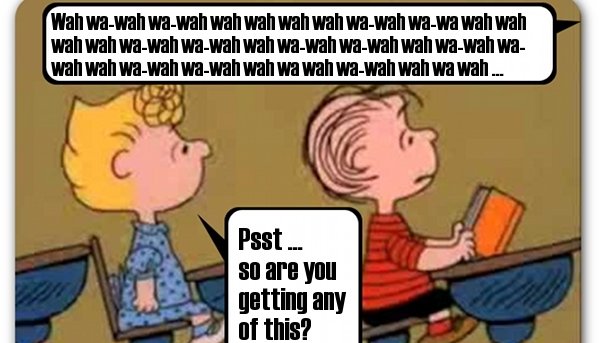Give It Away

You’ve heard that thing about the tree falling in the forest, right? It goes like this:
“If a tree falls in the forest and no one is there to hear it, does it make a sound?”
Commence deep philosophical conversation.
I want to apply this same question to communication:
“If a person speaks and no one is there to receive it, is it communication?”
I want to make the argument that it’s not. Communication is a two way street… there’s gotta be a giver and a receiver. If we’re not interested in the person on the receiving end, the noise we’re generating is something besides communication.
Now you’re over there saying “Hey! I talk to myself sometimes, what about that?” Totally I do that too, especially when I’m trying to work through a problem or pep myself up. But I’d argue in that case that there’s still a listener – YOU! You are on the giving and receiving end of your communication.
It’s easy for us to lose track of the receiver when we’re speaking memorized lines, singing someone else’s song, or delivering a speech that we’ve already prepared. We can get so caught up in what we’re saying that we forget about who’s listening. Our brain starts to become consumed with “what should I do with my hands?” “does my vocal inflection sound good?” and “did I emphasize the right word??” This is when our delivery becomes ineffective and unauthentic. Why? Because we’re making it about us, not about the listener.
When we spend too much of our energy monitoring how verbal and non-verbal information is leaving us, we sabotage the very process we’re trying to help. We wind up sounding like the adults in Charlie Brown: Wah wa-wah wah wah wah wa-wah.

The listener can’t receive our meaning.
How do we remedy this problem? Here’s your mantra:
Give it away.
Give your thoughts away. Focus on the receiver. Make your communication about them. Stay connected enough that you could answer the question “Did they get that?”
Now when you’re rehearsing it’s totally your business to consider your gestures, explore different possibilities for vocal inflection, and play with your phrasing. But that’s your homework. Once you’re in front of the person or people you’re talking to, it’s no longer your business to monitor that stuff. You can trust that your homework lives in your cells, and that as long as you’re present with your listener the decisions you made about your physical and vocal delivery will arise to serve you.
What do we do with our communication? Let it move freely through us and give it away. After all, it ain’t communication if no one’s there to hear it.
50% Complete
Get each week's podcast episode in your inbox.
Plus other voice news from me! Pop in your details below and then keep an eye on your inbox... Remember to check your spam folder, just in case!
